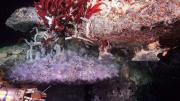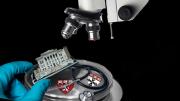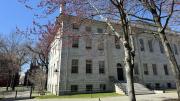In a cavernous underground space behind Harvard’s Biological Laboratories, biochemist Peter Girguis frowns at the pressure vessel in his hand. The machined titanium cylinder, about the size of a French press, gleams as he works to release the cap, and he chuckles at his own stubbornness. He could probably find a tool to loosen it, he remarks. But Girguis has a calm self-assurance around physical objects more characteristic of aircraft mechanics in overalls than biochemists. With a flick of his wrist, the cap is out. The walls of the vessel turn out to be nearly an inch thick, the space inside about the size of a jam jar. This summer it will become home to a species of deep-sea snail scooped up by a remotely operated vehicle three miles down, where the pressure is about 3,200 pounds per square inch. The pressure on the surface is a mere 15 pounds per square inch—comfortable for humans, but inhospitable to creatures from the deeps—so on their research ship, Girguis and his colleagues have about 45 minutes to re-create the deep-sea pressure in the vessel and fill it with hydrogen sulfide, oxygen, and other essentials before the snail starts to die. Once they stabilize the conditions in the vessel, they have a compact, nearly intact fragment of an ecosystem so far removed from our own that, for a long time, there were few ways to study it directly.
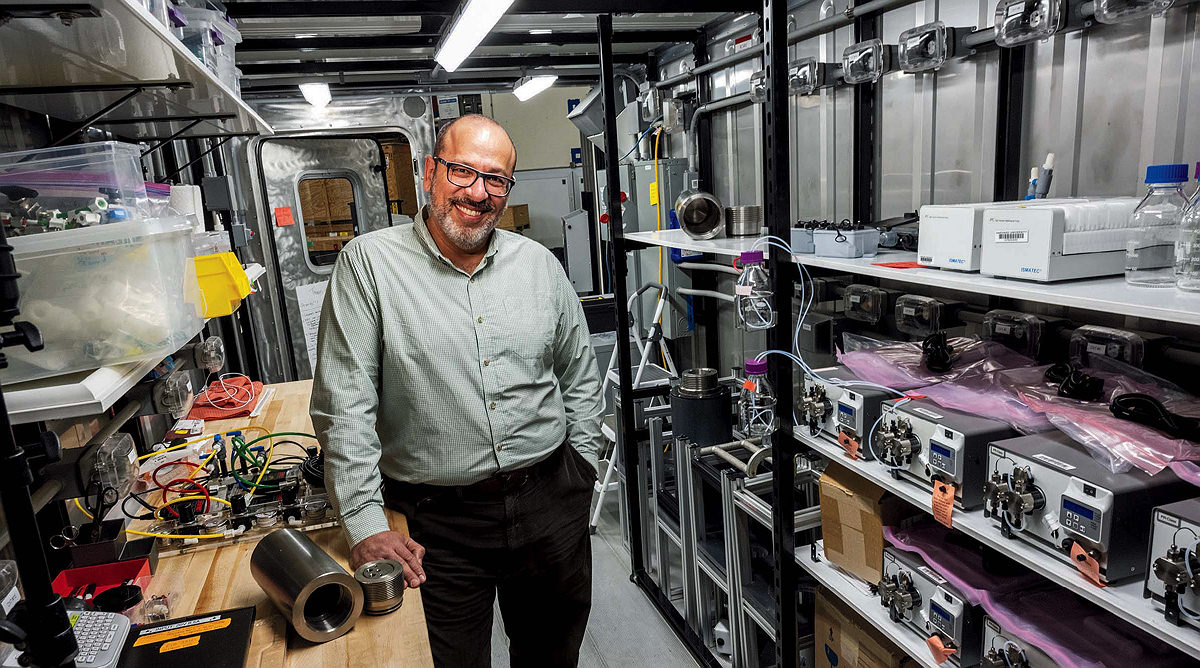
Peter Girguis on terra firma in the lab
Photograph by Jim Harrison
Girguis, professor of organismal and evolutionary biology, has spent nearly three decades working to understand the communities that gather at hydrothermal vents. Around fissures in the ocean floor where these geysers of hot, acrid water fume out, strange life makes its home: snails with iron-sided feet, tubeworms that digest hydrogen sulfide, bacteria that live within such creatures or on their own on the seafloor. The pressure vessels and the systems that keep them running, along with other tools Girguis helped invent, have contributed to his renown as one of the ocean’s most creative researchers. With them, he explores how deep-sea organisms can live off the energy contained in rocks, how they manage to fix carbon as efficiently as plants, and what that means for life on this planet and elsewhere in the solar system.
This summer, Girguis and his crew will take the pressure vessels out to sea in a new portable lab, a shipping container stuffed with equipment and secured to the deck of the Schmidt Ocean Institute’s research ship. July and August will find them off the coast of Costa Rica and farther south, in the Galapagos, where the ocean floor roils with hydrothermal vents, plumbing the void.
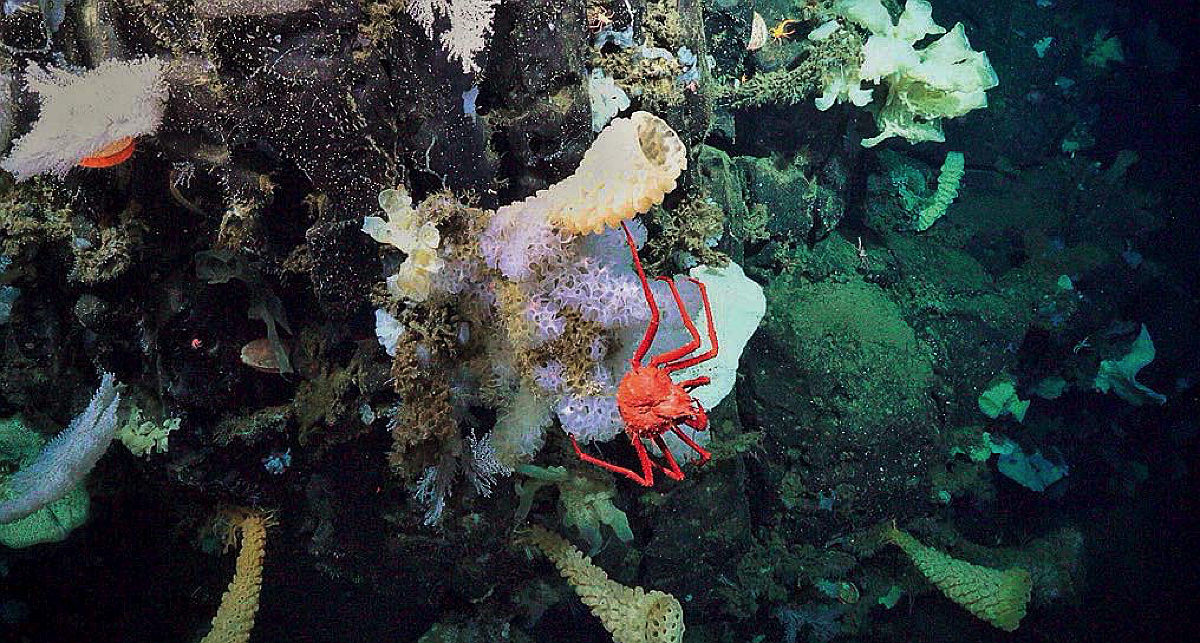
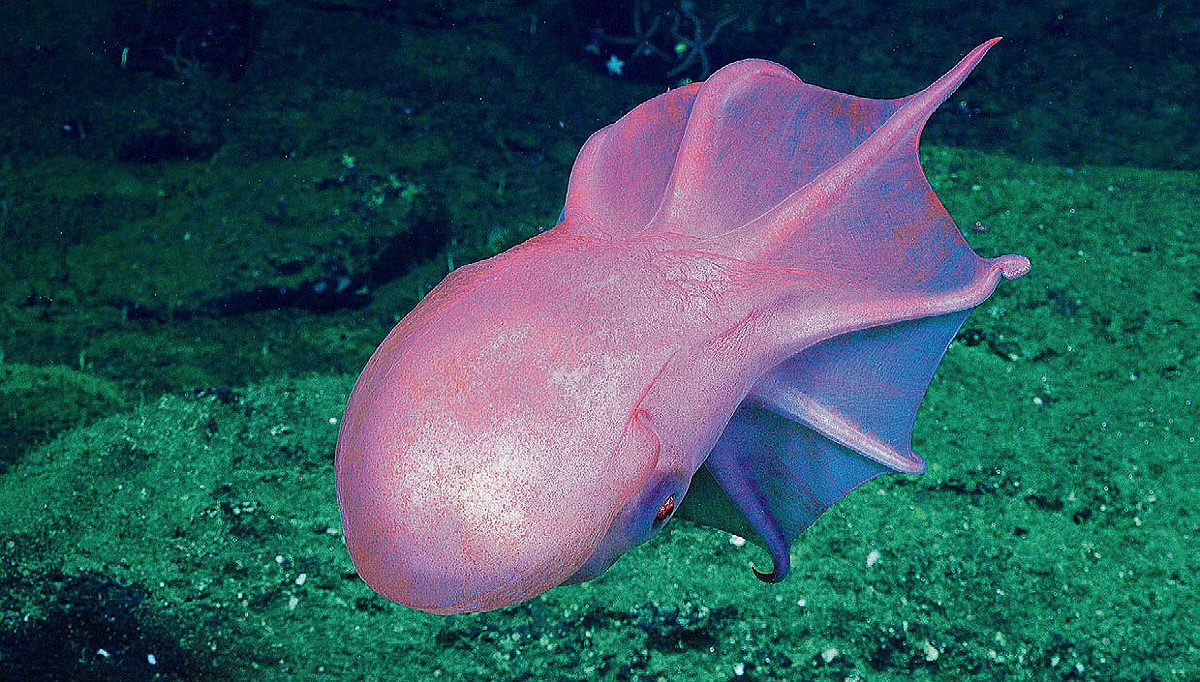
Top: a remote dive at Emery Knoll, a deepwater reef off Southern California, reveals crabs, sponges, and corals. Bottom: a rare sighting of the massive seven-arm octopus, Haliphron atlanticus
Photographs courtesy of the Schmidt Ocean Institute
In the 1970s, when Girguis was growing up in Downey, California, the void explorers talked about was space. Downey was headquarters to Rockwell International, a contractor for the Space Shuttle. Girguis’s parents, a biochemist (his father) and an aerospace engineer (his mother), who had immigrated from Egypt, moved there because she worked for Rockwell. “I lived two blocks away from the surplus store of Rockwell International, where they sold bits and pieces of spacecrafts and what-have-you at a time when you could do that,” Girguis recalls. “So my basement has bits and pieces of spacecraft that I’ve hauled around, much to the chagrin of my partner.”
Girguis describes himself as an anxious child. He had difficulty reading, and his parents were not always alert to the social norms that defined the life of an American kid. They sent their son to school in formal clothes, which contrasted with the Levi’s of his peers. When he went to UCLA in 1989, he struggled with pre-med classes, but when he stumbled into oceanography, his fate was sealed. He loved the alien strangeness of the deep ocean—especially around the hydrothermal vents that scientists, descending in the tiny chamber of the U.S. Navy’s Alvin submersible, had been exploring since 1977.
At the hydrothermal vents, where sunlight never penetrates, creatures live in total darkness. They build their bodies and exist in ways that seem to have little in common with inhabitants of sunlit realms. Humans and most other animals depend on the energy of the sun, eating plants or the species that feed on them, and breathing in the products of photosynthesis; vent dwellers draw on the energy of the planet, heated by the Earth’s molten core and fed by bizarre reactions between seawater and rock.
Girguis traces some of his motivation to become a scientist to the TV show Star Trek: The Next Generation. Sitting in his office at Harvard today, surrounded by books and models of the Saturn V rocket and a whaling vessel, he laughs. “As embarrassing as it is to admit, it was a huge part of my decision to go into science,” he says. “Because from that TV show, I really fell in love with the idea that understanding the world around you is maybe the greatest privilege that you can have.”
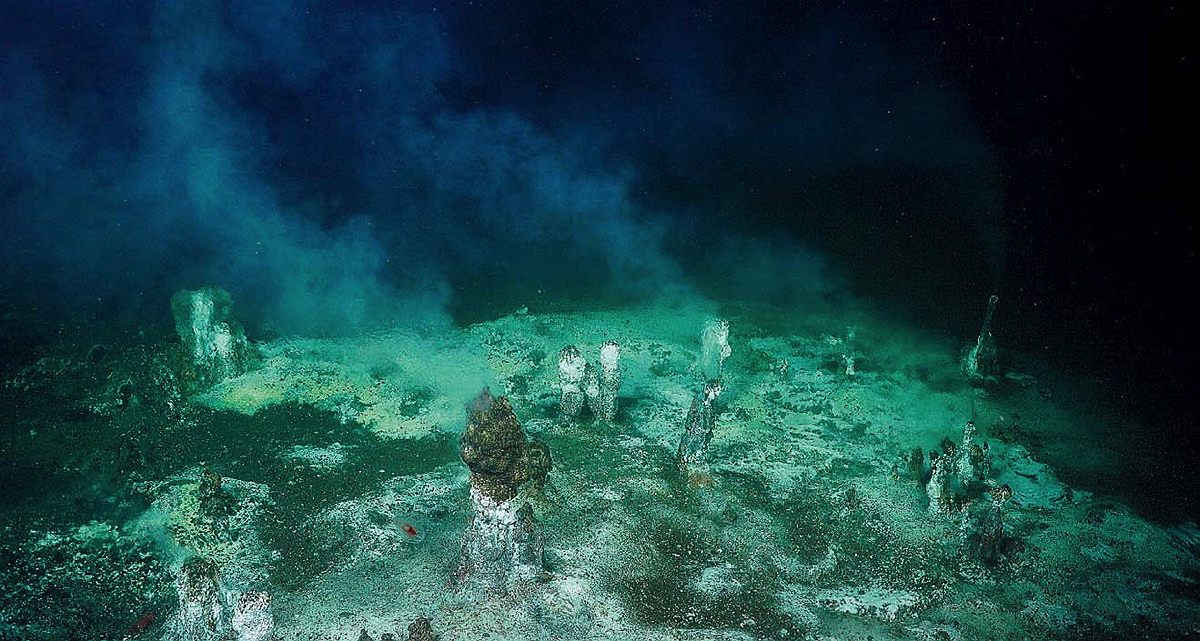
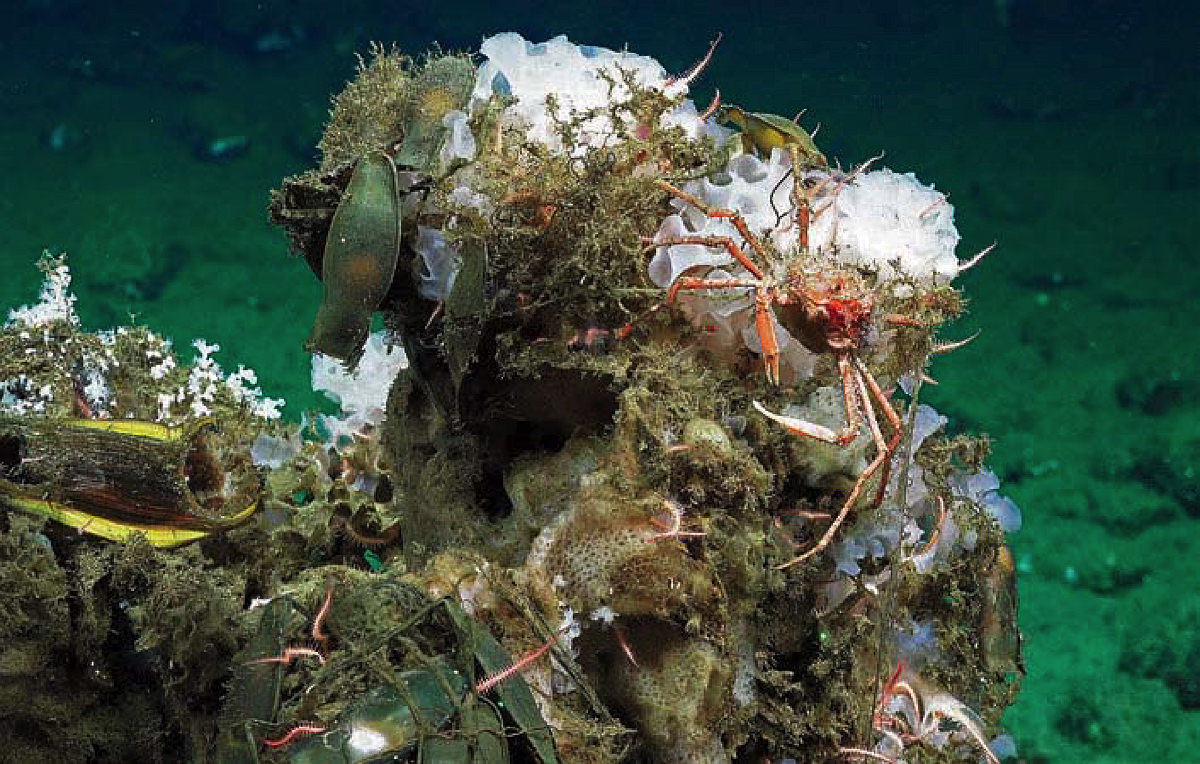
Top: a landscape of hydrothermal chimneys. Bottom: spider crabs and sponges at Emery Knoll. Skate eggs are visible in the foreground.
Photographs courtesy of the Schmidt Ocean Institute
At UC Santa Barbara (UCSB) in 1995, Girguis became a graduate student in the lab of James Childress, who studies sea creatures’ metabolism. Childress was working on an early version of the pressure vessels, and Girguis, who can engineer whatever tools are necessary to achieve his goal, got the system working. His first target: the giant tubeworms, Riftia pachyptila, that grow at the vents in bouquets of long white tubes fringed with crimson plumes. Working from a research ship at the East Pacific Rise, he brought the delicate creatures up. “He was one of the first to go out to sea as a graduate student and keep them alive in the lab at UCSB,” recalls Victoria Orphan, a geobiologist at Caltech who was also a student at Santa Barbara then. “It was all very exciting to see these animals brought back to campus.”
Tubeworms have no mouth, no anus, and no digestive tract. In 1981, Colleen Cavanaugh, a professor of organismal and evolutionary biology at Harvard, and her colleagues posited that they receive their energy from the metabolism of bacteria living within their tissues. Scientists knew the symbiont bacteria consumed corrosive hydrogen sulfide from the vents, along with carbon dioxide and oxygen. But dead worms revealed little about their inner workings.
At UCSB, Girguis monitored the oxygen, hydrogen sulfide, and carbon dioxide the living worms he brought back from the deeps consumed. He published the first data on what proportions of each substance their unusual metabolism used, starting the process of opening the black box. And he found that the worms pumped protons out of their bodies at rates seen nowhere else in the animal kingdom—a way of managing their acidity. Girguis’s methods enabled a rush of new research on the worms, including the revelation that Riftia protect themselves from the hydrogen sulfide with a protein that binds to it in their blood stream and ferries it to their symbionts.
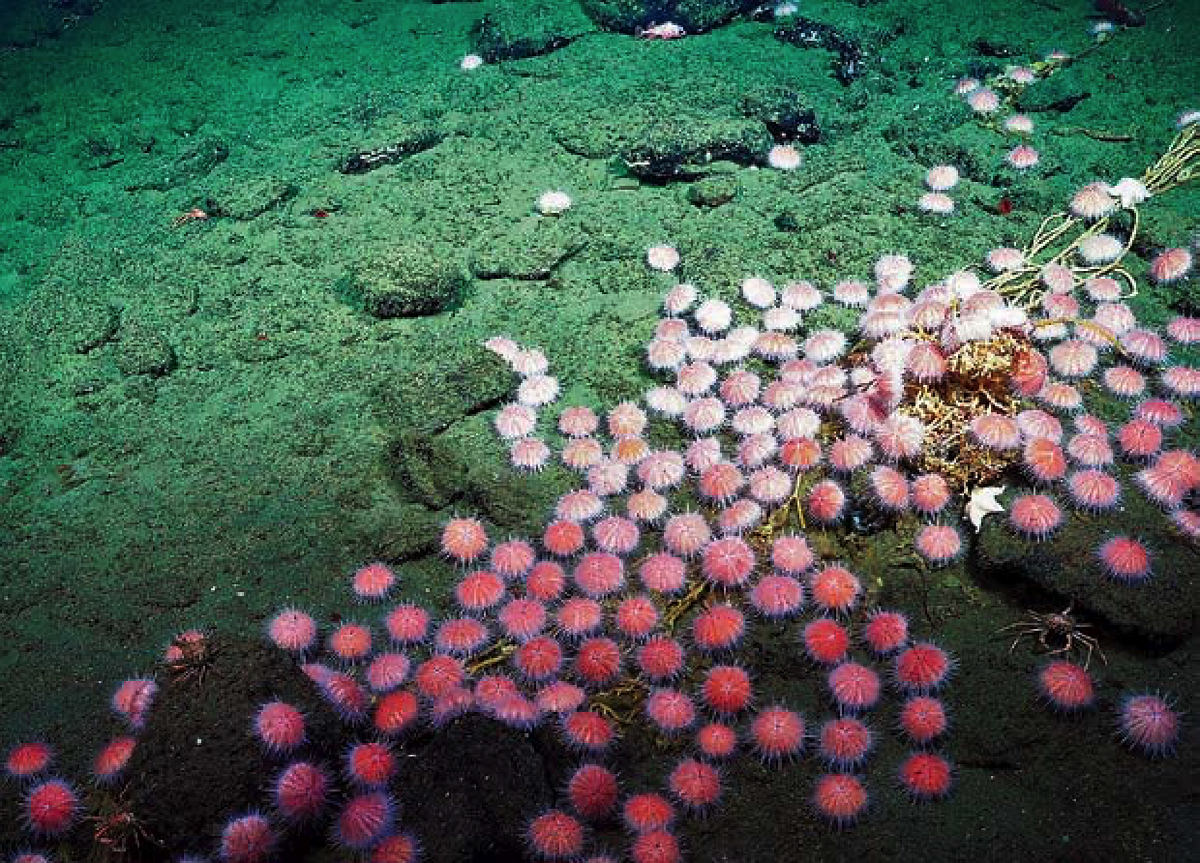
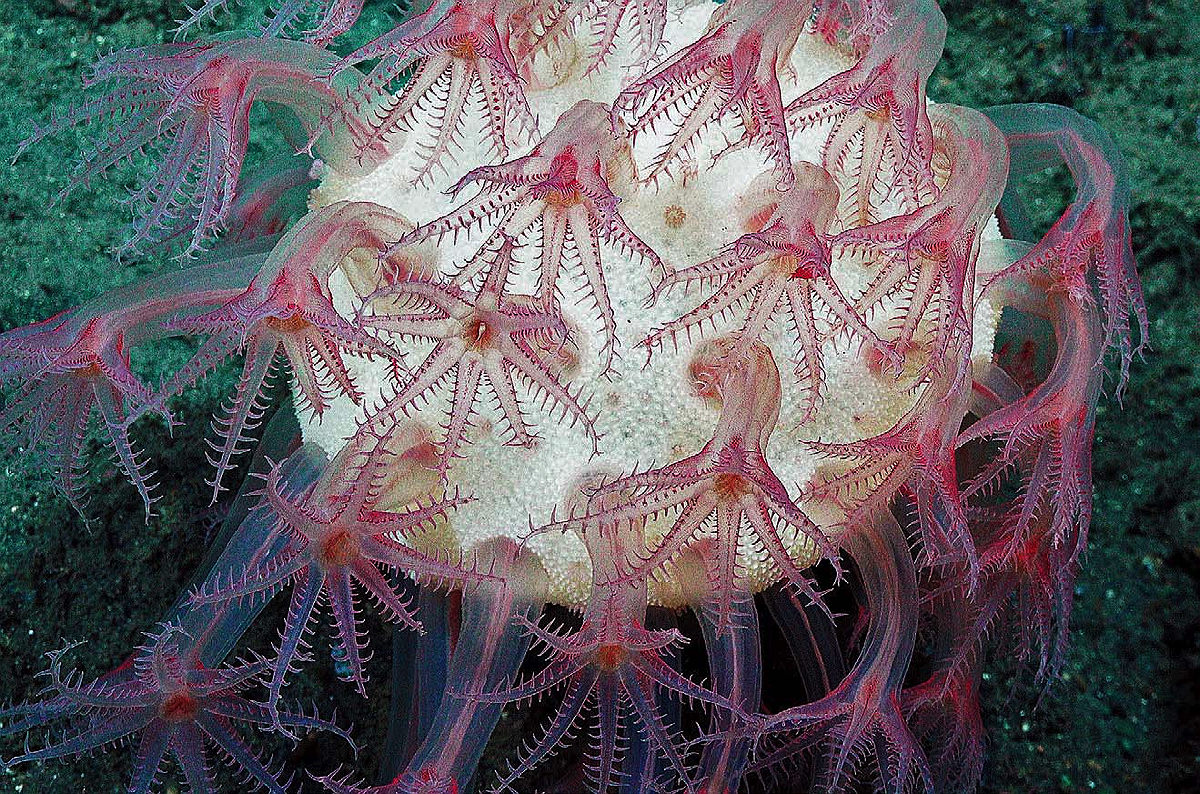
Top: sea urchins crossing Lasuen Knoll, off the California coast. Bottom: a mushroom soft coral with feeding polyps extended on the Davidson Seamount, at a depth of 4,800 feet.
Photographs courtesy of the Schmidt Ocean Institute
Next, at the Monterey Bay Aquarium Research Institute, a nonprofit oceanographic research center in California, he worked with microbiologist Edward DeLong on growing another set of extreme organisms in the lab: deep-sea microbes that eat methane. “He had this crazy, almost-Rube-Goldberg device down in the cold room with these big columns of sediment. This required a lot of babysitting,” remembers Orphan. “It was a labor of love, but he pulled it off. There was no roadmap for this. But he took basic principles from engineering and built a device to recreate important conditions to understand the physiology of microbes.”
How surface dwellers breathe and eat has been more or less known for a long time. But to understand the mysterious organisms of the ocean floor is to explore another path that life has taken, dictated by the challenges of an alien environment. Their existence has implications for human survival: deep-ocean sediments are the planet’s largest repository of methane—which, when released into the atmosphere, is 25 times more potent a warming agent than carbon dioxide. Methane bubbles from hydrothermal vents and their chillier counterparts, cold seeps, incessantly, but very little of it escapes the ocean. The microbes Girguis scooped up with a robot submersible in the Monterey Canyon, and their neighbors—certain species of tubeworms and others—have an uncanny ability to devour it. The life around vents and seeps protects terrestrial ecosystems by sequestering 90 percent of the circulating methane that otherwise might rise to the surface and contribute to global warming.
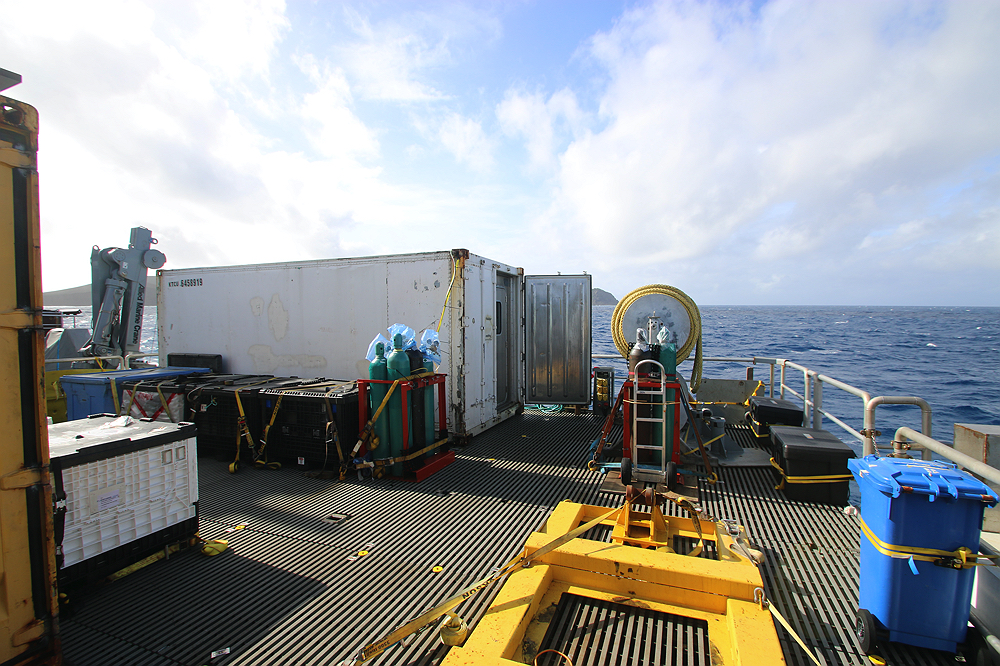
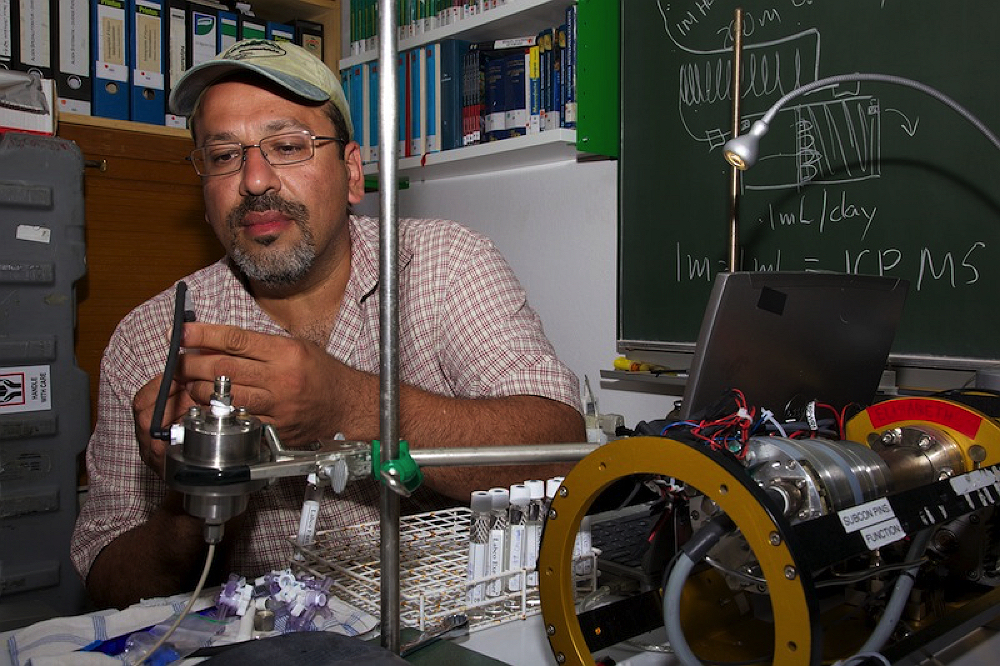
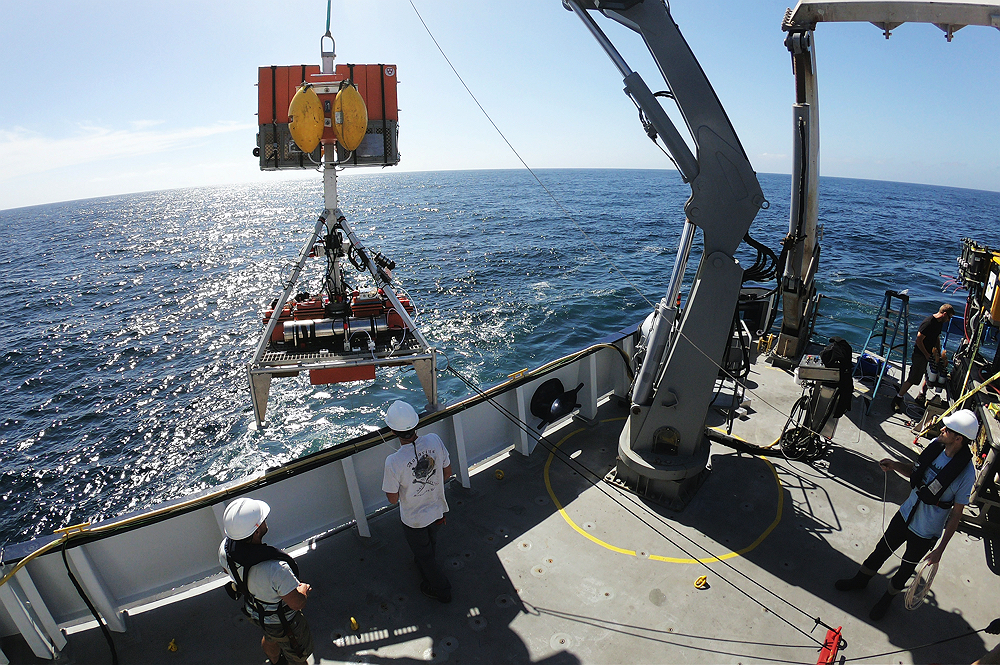
Top: the portable lab on deck. Middle: Girguis working on a piece of equipment. Bottom: recovering the ABISS lander onto the aft deck of the Research Vessel Falkor.
Photographs courtesy of the Schmidt Ocean Institute
With the system Girguis built for growing the methane-eating microbes, it became possible for scientists to study them on the surface for months at a time, a major feat. “I’ve always admired Pete not just for his cool science, but for his technical engineering talent,” says Orphan. “He enables the whole field by doing what he does.”
Though the next research cruise is months away, down in Harvard’s High Bay, a decommissioned particle accelerator that serves as a garage for scientific paraphernalia, the high-pressure lab is surrounded by boxes bristling with gear. It’s reached through a maze of bins beside a giant telescope that regularly travels to Antarctica—“other people’s toys,” says Jessica Mitchell, a post-doctoral researcher in the Girguis lab who is in charge of the pressure lab’s systems.
In the container, pink sticky notes dot the walls. Someone will be coming soon to build more shelving for the vessels that will house tubeworms, snails, and mussels brought up from the deep. When it’s all set up, the container’s walls will be lined with pressure vessels, tanks of seawater and gasses, all the apparatus needed to keep the vessels habitable. In the center, galley-kitchen style, the scientists will work shoulder to shoulder and back to back, adjusting the pressure levels, taking samples of the animals’ tissue, and setting up experiments. Mitchell herself is a tubeworm researcher, focusing on the symbiosis between the worms and their bacteria. But out on a cruise, everyone pitches in to bring the creatures back alive.
Research vessels are usually staffed and operated by a foundation or an institution, with scientists from several different labs joining for several weeks at a time. Life aboard ship is intense. “People just work around the clock,” says Jacob Winnikoff, a NASA-funded post-doctoral researcher in the lab who is studying bacteria adapted to pressure. “It’s a high-stakes working environment.” With just weeks to gather specimens and data to study later—potentially for several years—the scientists work every waking moment. They operate remote-control submersibles, extract DNA, pack samples away in fridges, troubleshoot plumbing. “The amount of plumbing that we do in this lab—I think pretty much anyone who comes through [here] becomes something of a plumber,” says Jennifer Delaney, the Girguis lab’s manager. The queen of logistics, she talks to port authorities, handles safety, buys insurance, packs and ships gear. It’s a science lab, yes. But it’s also a crew of explorers preparing for their annual expedition into the unknown.
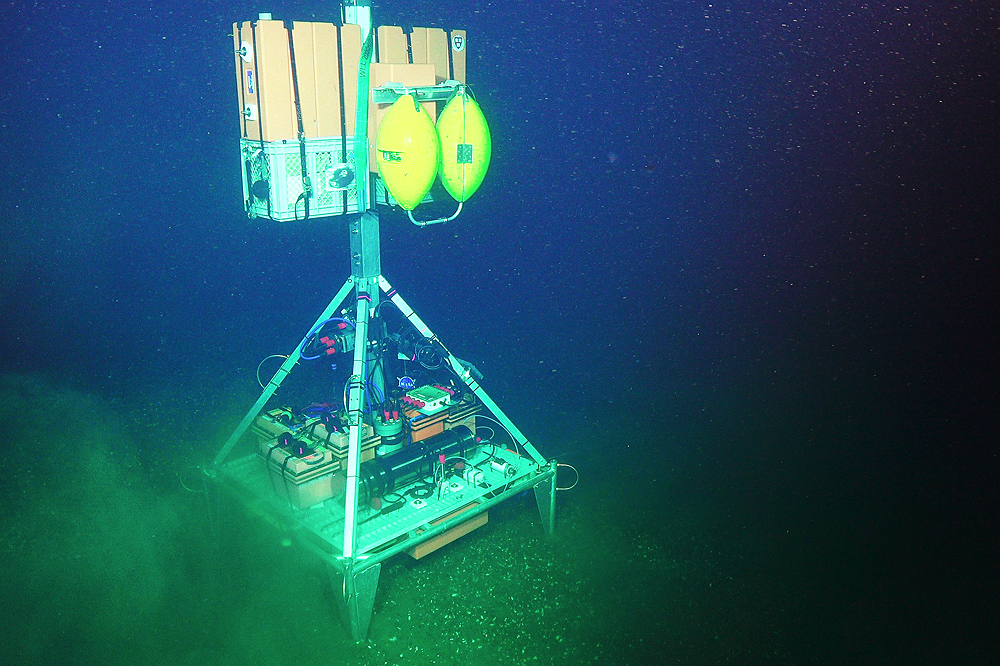
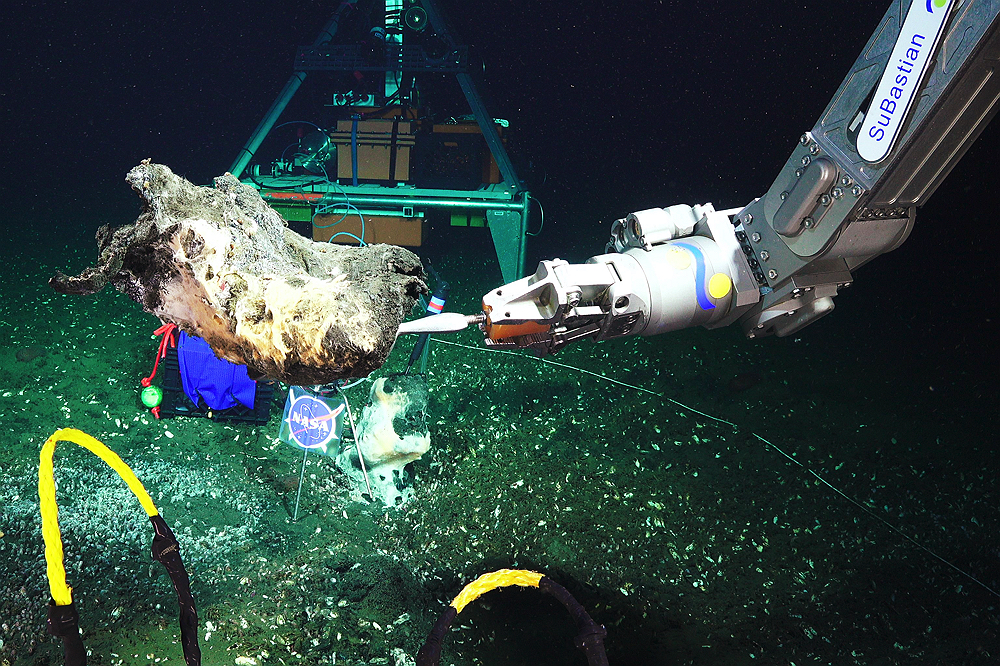
Top: the ABISS lander on the ocean floor (captured by the ROV Subastian). Bottom: the ROV Subastian retrieves a carbonate chimney from the ocean floor near Point Dume, California.
Photographs courtesy of the Schmidt Ocean Institute
“You really find out who people are when you’re on those cruises,” says Steve Haddock, a marine biologist at the Monterey Bay Aquarium Research Institute. Girguis maintains his ebullience under pressure, says Haddock, who has known him since they were students together at UCSB. “He’s kind of larger than life—he seems like a storybook character sometimes—like he stepped out of the pages of some novel.”
Girguis’s menagerie of machines comes into its own on cruises. After he arrived at Harvard in 2005, he finished developing an underwater mass spectrometer, a device that detects gasses dissolved in seawater, and he’s used it to make maps of methane and carbon dioxide seeps on the ocean floor, discovering that they change and move over time. He built a device to analyze isotopes underwater; he built another to monitor seawater on the ocean bottom for months at a time. Every time he deploys a new instrument, he shares it. He estimates that there are now at least 10 underwater mass spectrometers around the world that draw on his design, enabling mapping of the seafloor seeps in places Girguis himself will probably never visit.
That matters because the ocean is still essentially an unknown. As Girguis often says, by surface area, the deep ocean is 80 percent of the habitable space on the planet, even if it’s not inhabitable by most forms of life. Climate change threatens some of the ocean’s most basic processes—turning the water so acidic that oysters and corals can’t make shells, for instance—and it’s an open question how that will change the parts of it still unexplored. The more ocean scientists can make use of Girguis’s inventions to understand its farthest depths, he feels, the better.
Girguis’s pace as a researcher is matched only by the diversity of his pursuits. Since 2005, discoveries have streamed out of his lab—not just insights into the biochemistry of deep-sea creatures but advances in parsing genomes, new ways to look at the sea floor, ideas for tiny fuel cells that draw on microbes, plans for an underwater observatory that might someday be installed in the ocean of a Jovian moon.
The Riftia tubeworms, he and others have found in the years since he collected his first samples, bring oxygen, carbon dioxide, and hydrogen sulfide to their symbionts via their blood. The symbionts trigger reactions involving those three components that produce energy and sugars. “At that point, the symbionts leak food to their worms,” Girguis says, releasing the sugars and ammonium out into the tubeworms’ bodies. The worms’ cells consume the sugars and use the ammonium to assemble amino acids, the building blocks of proteins. By studying living worms—what they eat and excrete and how they express their genes—Girguis and his colleagues have got the black box open.
What’s more, they’ve found that deep-sea animals are spectacularly effective at consuming and fixing carbon dioxide, a process that, on land, is mainly the domain of plants. This summer, with the mass spectrometer, Girguis hopes to track carbon consumption across entire deep-sea communities, to calculate just how much they are capable of sequestering. “I have a hunch, based on our data, that these ecosystems are more productive, meaning they fix more carbon than most, if not all, photosynthetic ecosystems, on a per square meter basis,” he says. As well, he plans to use that information to calculate how much life can be sustained by each unit of energy produced by a vent. “NASA has funded me and my colleagues to think about how large of a biosphere could be supported on the ocean moons of Jupiter and Saturn,” he says, “where we are pretty sure there are hydrothermal vents.”
The breadth of these topics reflects his interests, but also those of his doctoral students, post-doctoral researchers, and staff scientists. Andrea Unzueta Martinez, a post-doc in the lab, studied oysters—far from a deep-sea organism—but she and Girguis share an interest in sea creatures’ microbiomes, which he’s encouraged her to explore. “He’s really supportive,” she says. “I feel seen…by him and amplified.”
Perhaps part of what makes the lab feel welcoming is Girguis’s fondness for over-the-top gestures. The lab is known for epic holiday cards, which display a delightful lack of vanity. Last year, the scientists dressed up as the Muppets. Ian Hughes, now a graduate student, was wandering the halls, still undecided about which lab to join, when he happened upon that holiday card, printed out and posted on the wall. “Any lab with a costume drawer—probably it’ll be fun,” he remembers thinking. Indeed, two large plastic bins of costumes and a jerry-rigged green screen grace the lab’s lunchroom. In 2022, the scientists played characters from The Lord of the Rings. Unzueta Martinez was Arwen, Hughes was Boromir, and Girguis, of course, was Gandalf.
In High Bay, Girguis putters around, describing what the finished pressure lab will look like when hoisted by an overhead crane onto a truck that will take it to the sea. Eventually, the container will arrive in Costa Rica on the research vessel Falkor(too), and the team will fly in to meet it at the port of Puntarenas. He looks up at the ceiling, where a decal of a killer whale stretches the length of the container. “They decided to give it an orca, I think because one time I mentioned I like killer whales,” he says sheepishly. “It’s a little bit off-brand, but we’ll be fine!”
This summer, in the beam of light cast by a submersible, he will see once again the unearthly white pipes where the tubeworms live, their red fronds swaying gently. Snails will trundle by, and light will play over mussels clustered together on rocks that fume and bubble. Perhaps cooled lava from a deep eruption will have carpeted the ocean floor, changing the landscape entirely. Maybe he and his crew will detect new sources of methane and find fresh communities gathering to consume it. Down there, he will visit the other world he thinks about during his hours on the surface—the alien planet that’s a little-explored part of our own.
